#Rhynchocyon petersi
Text
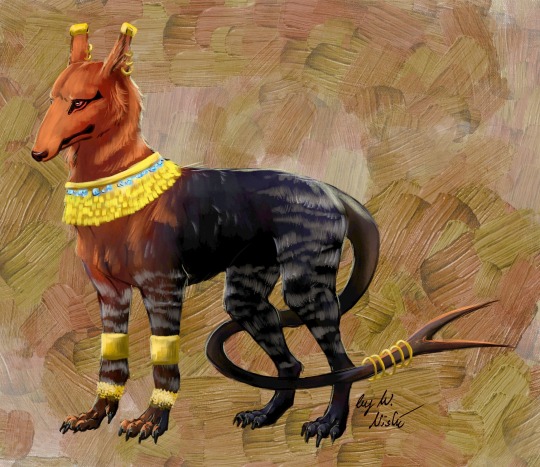
My friend started reading ENNEAD, too.
She asked me to draw a Seth animal (not the character, but the creature that the Egyptian god is “based” on). So my hand slipped.
I am not entirely happy with how this turned out. BUT it is the first colored painting I've done in a long time so I wanted to celebrate this by posting it, even if it’s just a concept for now.
Anatomy and coloration are based on a Rhynchocyon petersi, an Okapi, an aardvark and a doberman dog. All is subject to change as this design may be used for future pictures. Maybe I will turn him completely black or reddish-brown after all. Now off to bed with me.
#ennead#seth#set#Seth animal#setech#typhonic beast#animal#okapi#dobermann#aardvark#Rhynchocyon petersi#digital art#digital aritst#artists on tumblr#fanart?#god#ancient egypt
24 notes
·
View notes
Text

Behold the black and rufous elephant shrew (Rhynchocyon petersi)! Despite its diminutive size, this critter is more closely related to elephants than it is to shrews. It’s also distantly related to manatees, dugongs, and hyraxes. It uses its long snout to scoop up worms, ants, termites, roots, berries, and shoots to eat. To move around its territory, this fast-moving mammal creates networks of foraging trails, which also serve as escape routes from predators.
Photo: B kimmel, CC BY-SA 4.0, Wikimedia Commons
#nature#natural history#animals#did you know#fact of the day#cool animals#cute animals#shrew#animal facts#elephant shrew
786 notes
·
View notes
Note
I would like to trade one (1) 🥚 for a funky little critter please
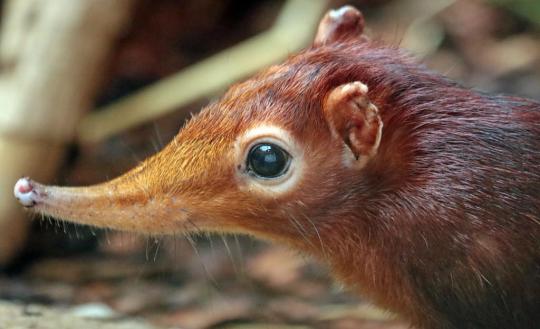
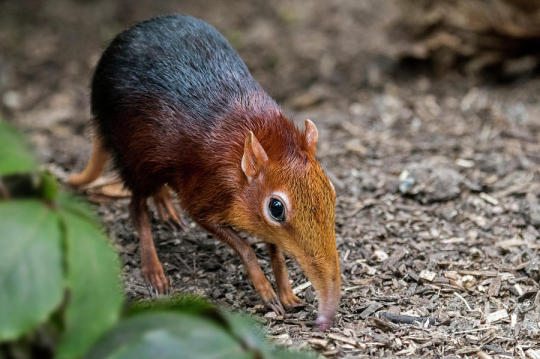
black and rufous elephant shrew! (Rhynchocyon petersi)
56 notes
·
View notes
Text
My favourite kind of convergent evolution is when mammals just get Big Snoots

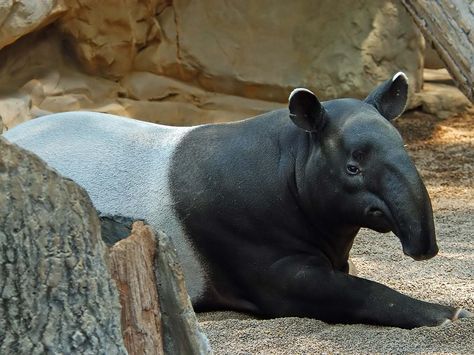

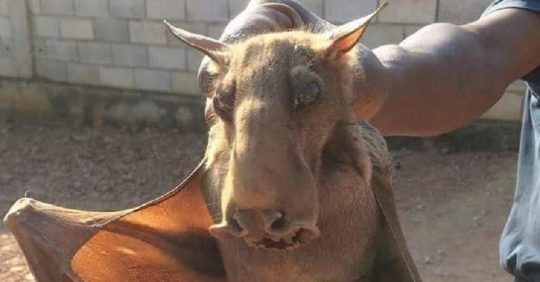

Peak fitness.
1. Saiga Antelope, Saiga tatarica
2. Malayan Tapir, Tapirus indicus
3. Northern Elephant Seal, Mirounga angustirostris
4. Hammer–headed Bat, Hypsignathus monstrosus
5. Black and Rufous Elephant Shrew, Rhynchocyon petersi
#saiga antelope#malayan tapir#northern elephant seal#hammer headed bat#black and rufous elephant shrew#animals#mammals#evolution
107 notes
·
View notes
Photo

Black and Rufous Elephant Shrew
Rhynchocyon petersi
Source: Here
186 notes
·
View notes
Text
Elephant Shrew!
There are 20 species of elephant shrews and they are part of the order Macroscelidea
Other members of that order include the aardvark, dugongs, elephants and golden moles
Ironically they are more closely related to elephants than true shrews
True shrews are part of the order Eulipotyphla
They are also able to run at speeds of up to 28.8km/h
If you have read this far why not follow us for daily animal facts and pics!
-
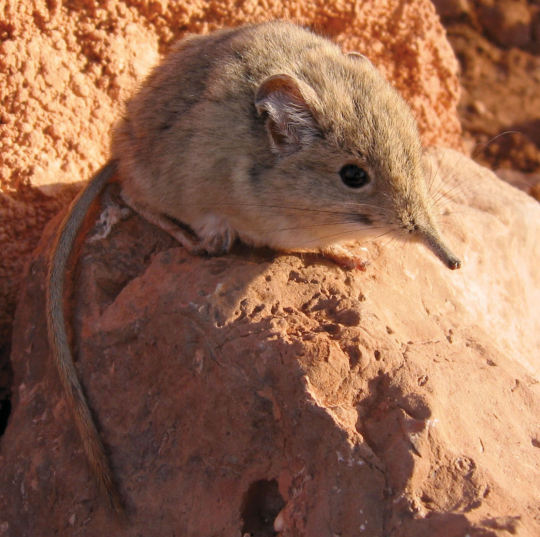
📷1: “Petrosaltator rozeti-Zootaxa.jpg” by Galen B. Rathbun on Wikimedia Commons (CC BY-SA 3.0)
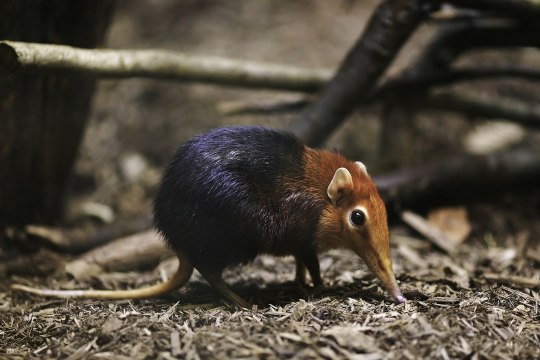
📷2: “Rhynchocyon petersi from side.jpg” by Joey Makalintal on Wikimedia Commons (CC BY 2.0)
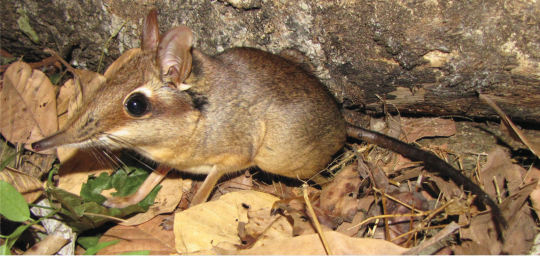
📷3: “Petrodromus tetradactylus-Zootaxa.jpg” by Galen B. Rathbun on Wikimedia Commons (CC BY-SA 3.0)
7 notes
·
View notes
Photo
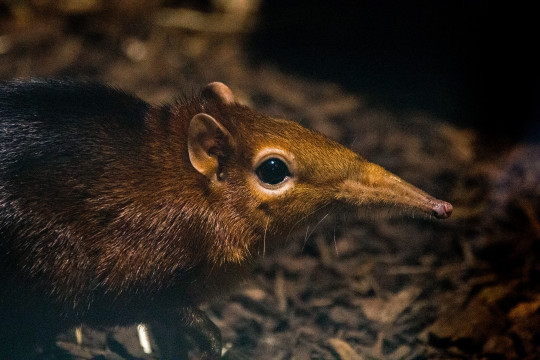
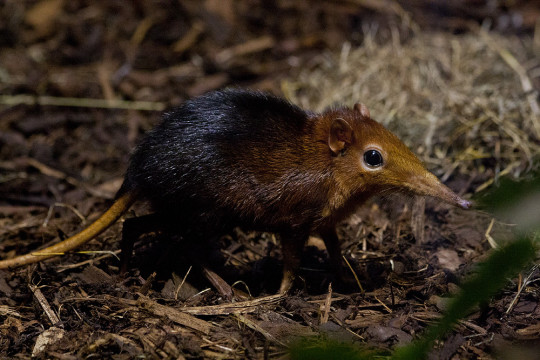
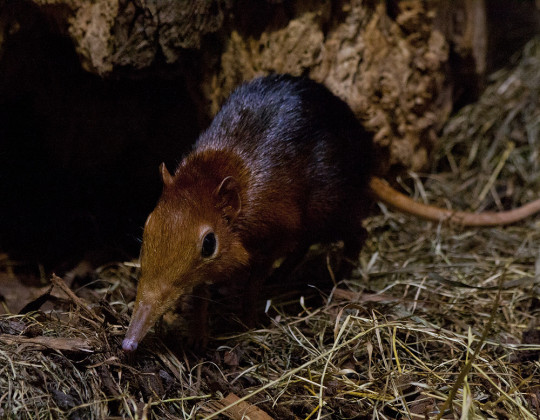

Black and Rufous Sengi by Hans De Bisschop
The black and rufous elephant shrew or sengi (Rhynchocyon petersi) is native to Africa and is one of the largest species of elephant shrew, growing up to 11 inches. It eats invertebrates such as beetles, termites, and centipedes, using its proboscis to dig them from the soil and its tongue to lick them up. Like most species of sengi, the black and rufous sengi lives in monogamous pairs.
200 notes
·
View notes
Photo
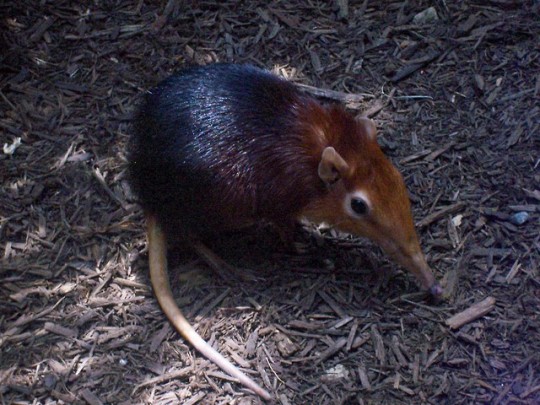
Black and rufous elephant shrew, (Rhynchocyon petersi)
#elephant shrew#mammal#macroscelidea#afrotheria#original photography#wildlife photography#take a closer look at that snout!#sengi
22 notes
·
View notes
Photo
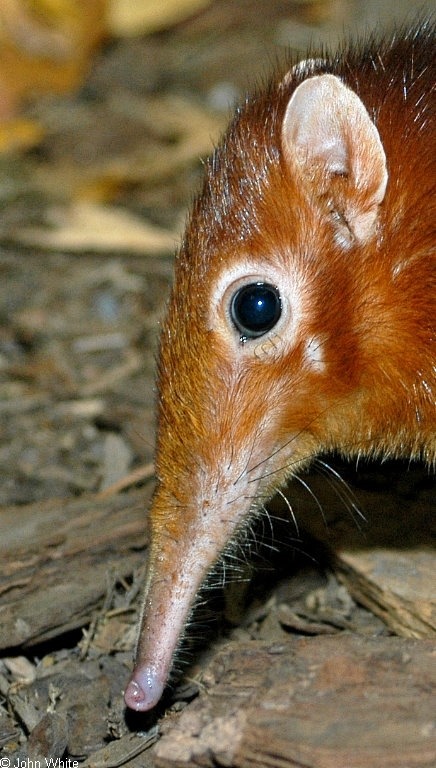
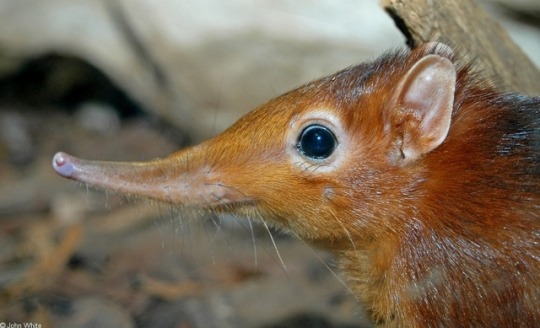
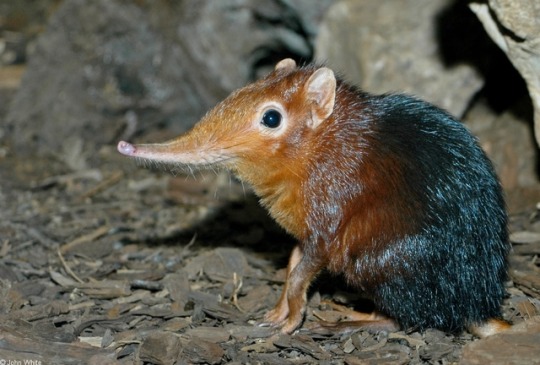
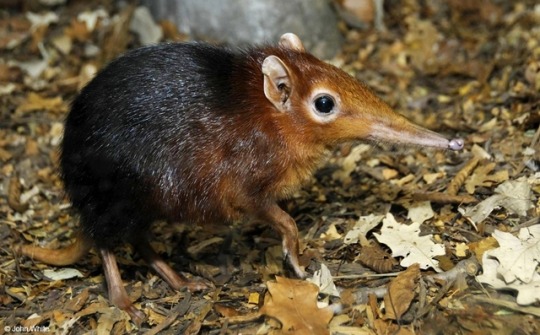
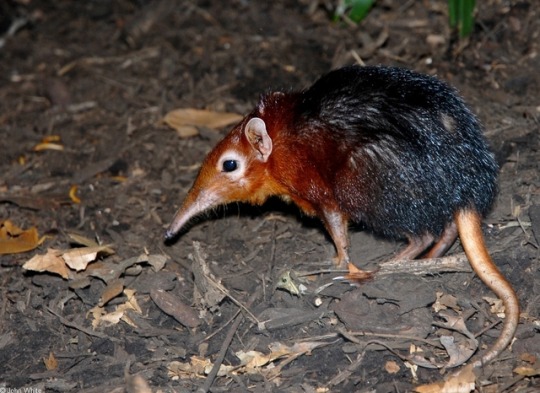


black and rufous elephant shrew (Rhynchocyon petersi), or the black and rufous sengi
The black and rufous elephant shrew,[2] (Rhynchocyon petersi) the black and rufous sengi,[1] or the Zanj elephant shrew[3] is one of the 17 species of elephant shrew found only in Africa.[2] Like other members of the genus Rhynchocyon, it is a relatively large species, with adults averaging about 28 cm (11 in) in length and 450-700 g (1.0-1.5 lb) in weight. It is native to the lowland montane and dense forests of Kenya and Tanzania.[4] It eats insects such as beetles, termites, and centipedes, using its proboscis to dig them from the soil and its tongue to lick them up.[5] It typically builds ground level nests for shelter[6] requiring dry leaf litter[3] often at the base of trees.[7] Like most elephant shrews, it lives in monogamous pairs, defending hectare-sized territories. The forests of the Eastern Arc Mountains are critical habitats for R. petersi.[7] The Chome Forest Reserve in Tanzania is an isolated, and largely undisturbed, habitat for the shrews.[7] Populations densities in the Chome area are significantly lower than the surrounding areas, home to approximately 2700 R. petersi, and is thought to be the result of restricted migration and illegal human activity.[7] It was once listed by the IUCN Red List as vulnerable, but has since been changed to a status of least concern.[9] However, its numbers are reportedly declining; suffering from severe forest fragmentation and degradation from human expansion.[9]
WIKIPEDIA
163 notes
·
View notes
Video
youtube
What would you do if a curious Giant Elephant Shrew came up and started sniffing you?
www.youtube.com/tacticalveterinarian
30 notes
·
View notes
Photo
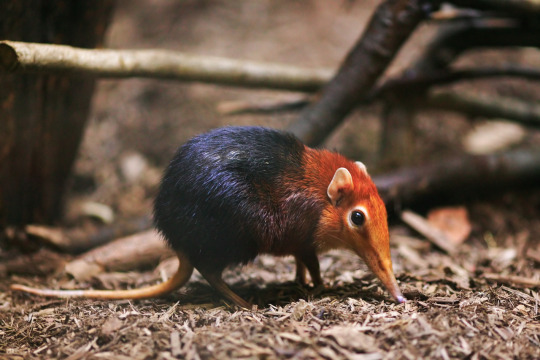
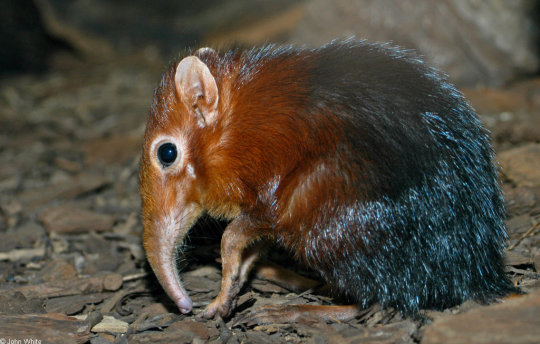
Black and Rufous Elephant Shrew
(Rhynchocyon petersi)
also known as the Black and Rufous Sengi, is a species of elephant shrew (obviously) of the family Macroscelididae (Elephant Shrews), endemic to regions of Kenya and Tanzania. They are large as far as shrews go, as adults can grow up to a foot long. their diet consists of vegetation, insects and small mammals (such as black rats, a favorite among them). They are listed as Vulnerable by the IUCN and several zoo's have undertaking breeding programs to help them
Phylogeny
Animalia-Chordata-Mammalia-Macroscelidea-Macrocelididae-Rhynchocyon-petersi
Image 1 Source, Image 2 Source
#Black and Rufous Elephant Shrew#Black and Rufous Sengi#Rhynchocyon petersi#elephant shrew#kenya#tanziania#Macroscelididae#animals#zoology#African animals#biology#science#Mammalia#Chordata#Macroscelidea
270 notes
·
View notes
Photo

Under the leaves by Svarta änkan on Flickr.
13 notes
·
View notes